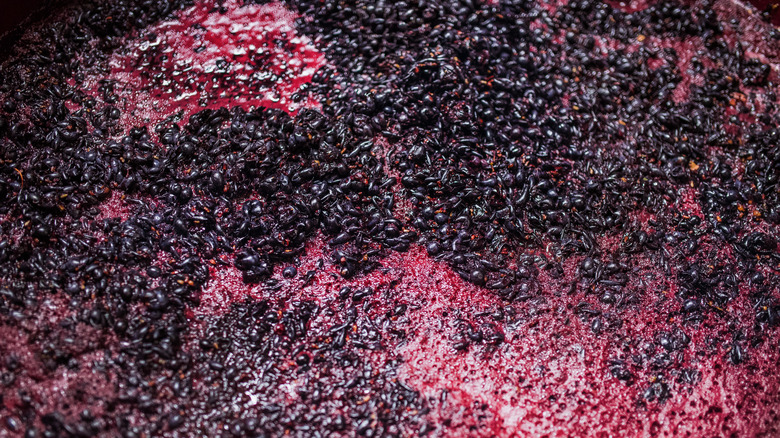Red Vs White Wine: What's The Difference?
Wine is a surprisingly ancient traditional drink. It has been used in religious practices, drank because it was cleaner than water, and pressed from hundred-year-old grape vines. Wine as we know it today has been traced all the way back to the Neolithic period (8500-4000 B.C.), and the actual step-by-step process of winemaking started about eight thousand years ago (via Arena Flowers).
Winegrowers and makers have had centuries to cultivate various grape varietals, trellises, fermentation practices, and bottling methods. Wine has always been a blend of art and science, of agriculture and technology. But stripped to its most basic and rawest level, wine is fermented grape juice. So, why does wine come in such a wide array of colors? Wine appears in pinks, ruby reds, whites, gold, and the darkest kinds can even be tinted a remarkable purple, but why? It all comes down to one part of this little bulbous fruit.
It's all about the skins
Wine grapes can be separated into three parts: the skin, the flesh, and the seeds. The color of the wine is not actually reflective of the juice. All grape juice is clear! Color is extracted from the skins during the fermentation process.
Once grapes are brought to the cellar where they will be sorted and processed, the varietals that winemakers are planning on turning into white wine –- like Pinot Gris, Chardonnay, or Pinot Blanc, for example -– will be taken directly to the press where the juice is immediately squeezed from the grapes (via Food&Wine). This ensures that the wine will not be tinted by the skins (which can be white or red) during fermentation. Red varietals, however, go through a different process.
When grapes intended to be used for red wines are brought into the cellar, they have dark purple skins which are left on during the fermentation process; this is called maceration (via WineStyr). Leaving the skins in the juice during fermentation allows the pigment to bleed into the liquid and also imparts tannins into red wine. Tannin, as well as growing climate, and the kinds of varietals blended to create the wine are the variables that make red wine bolder and heavier than white wine in both flavor and mouthfeel (via WineFolly).

